They’ve always been popular machines – but the retro roadster sector has been on fire lately. Easy-to-ride bikes, in a range of pricings, with simple classic styling, solid performance and a dash of old-school charm from the golden era of motorcycling? How could you go wrong?
Here’s our top ten pick of the class – from cheap, lightweight singles like the Royal Enfield Meteor 350 through the high-tech underpinnings of Yamaha’s XSR900 to the massive BMW R18, that takes you back to the firm’s R5 Boxer from just before the war. There’s something for everyone here we reckon.
It’s the retro bike that everyone’s talking about in 2022 – mostly because it was launched too early, long before the bike was even available. BSA’s Indian parent firm unveiled the sharp-looking 652cc single-cylinder machine at the 2021 NEC show – but the bikes didn’t actually hit the UK until the end of August 2022.
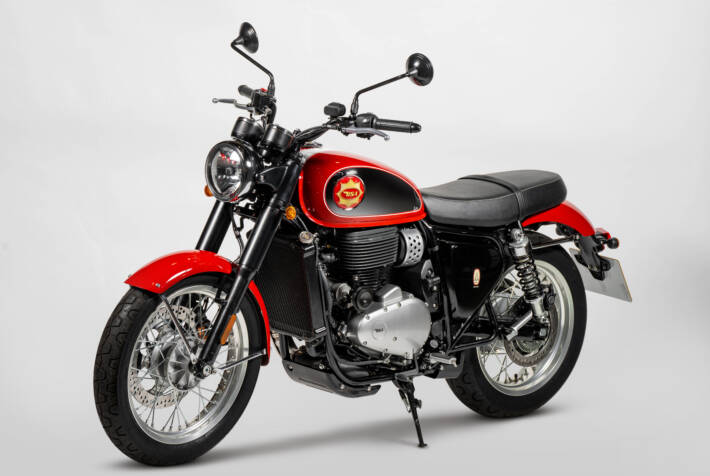
The design is refreshingly simple, with authentic 1960s looks – though the new Gold Star is powered by an engine design that’s bang up to date. The water-cooled unit has a DOHC four-valve head with twin plugs and fuel injection, and it puts out a decent 45bhp, with 55Nm of torque. The powerplant lives in a conventional steel tube double cradle frame, with twin-shock rear suspension and 41mm forks, and proper ABS-equipped disc brakes by Brembo front and rear.
Tyres are high-quality Pirelli Phantoms in classic tread pattern, mounted on 18 inch front and 17 inch rear rims. All-up wet weight is 213kg, and it comes with some useful add-ons, like a factory immobiliser, USB charging socket, 12-volt accessory socket and an assist/slipper clutch design.
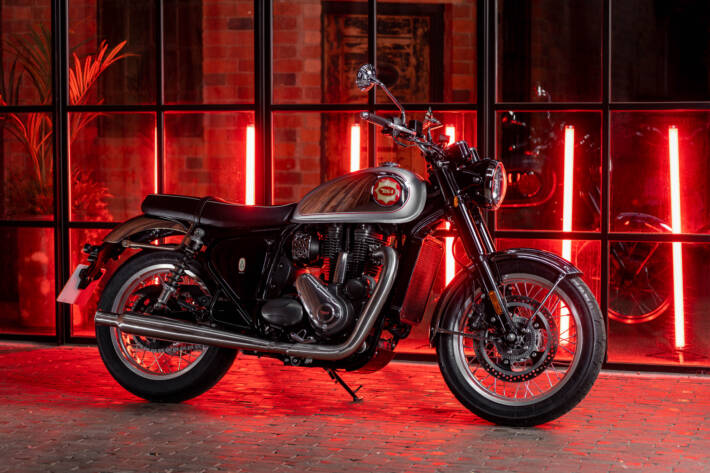
It’s a solid competitor to the likes of the Royal Enfield 650 twins, with similar specs in terms of power and mass – a couple of bhp less and around the same weight. The new Gold Star was priced well too, costing around £6,500-£7,000 when launched, depending on colour scheme.
Royal Enfield 650 GT and Interceptor
When launched in 2018, the new generation 650cc twins from Royal Enfield made a big impression. Here were two all-new retro roadsters – the Interceptor and the GT650 – with a classy-looking engine, slick design and great prices, which looked set to revolutionise Enfield’s offerings.
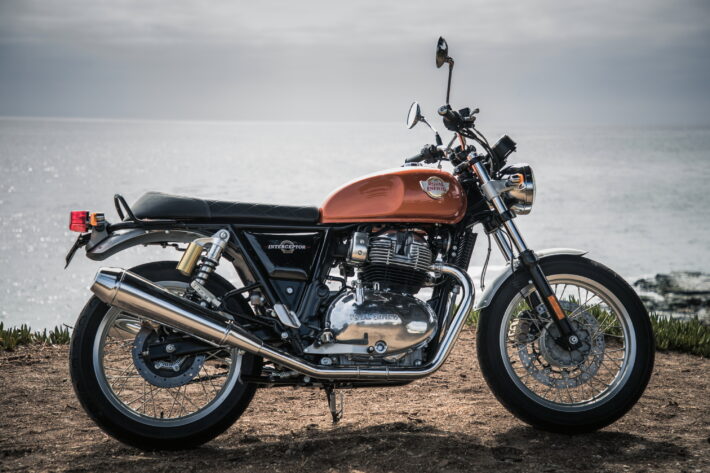
Built in India, but developed in the UK, the new bikes wowed the press at the launch, with the willing engine performance and superb chassis setup. The spec on paper looked basic: air cooled motor, modest power output of 47bhp, 212kg wet weight and a fairly conservative chassis design. But the influence of the British Superbike racers who carry out RE’s factory development riding, and Harris Performance, which planned the chassis layout, was clear when you rode the bikes. They were great fun to ride, and had taut, nimble, capable chassis performance.
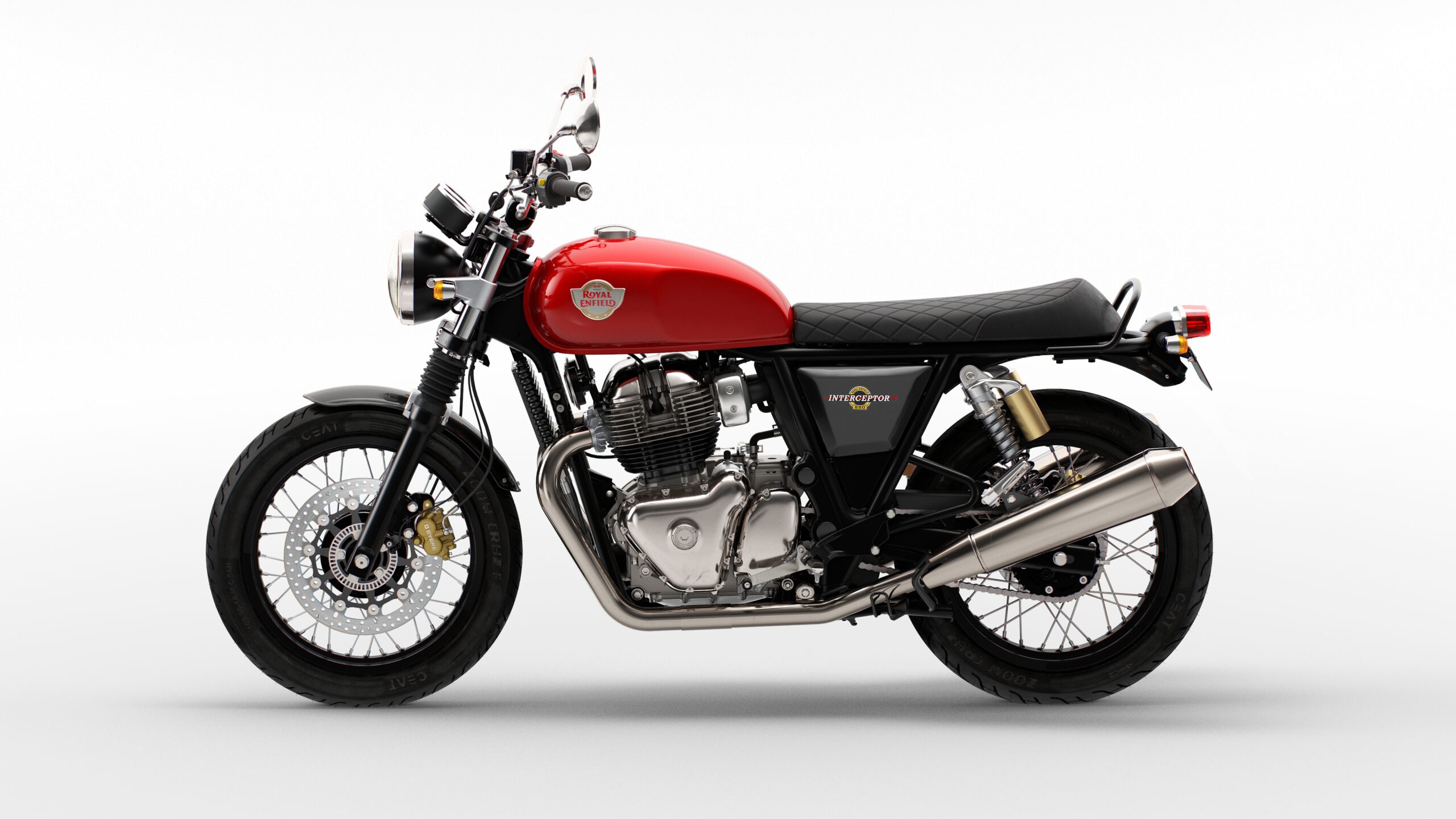
The GT is more of a café racer design than the Interceptor, but the main differences between the two are cosmetics, and riding position. The Interceptor has a more upright stance, while the GT puts you in a more racey crouch – but both are brilliant everyday bikes, and make a solid base for mild customising too. They’ve both been at the top end of the bike sales charts over the past few years, putting massive grins on the faces of thousands of UK bikers.
Royal Enfield Meteor 350
Hot on the heels of the 2018 Royal Enfield 650 twins came this, the Meteor 350 single. On the face of it, it’s a very limited machine, with just 20bhp from its 349cc air-cooled two-valve SOHC single-cylinder engine, commuter-level chassis kit, 191kg kerb mass and minimal equipment.
But, as with the 650s, riding it is much more fun than you might expect. Okay, you need to use all of the 20bhp, all of the time, if you want to keep up with modern traffic out of town. And the slightly cruiser-like chassis setup means you’ll be scraping the undercarriage fairly rapidly if you push it round a bend.
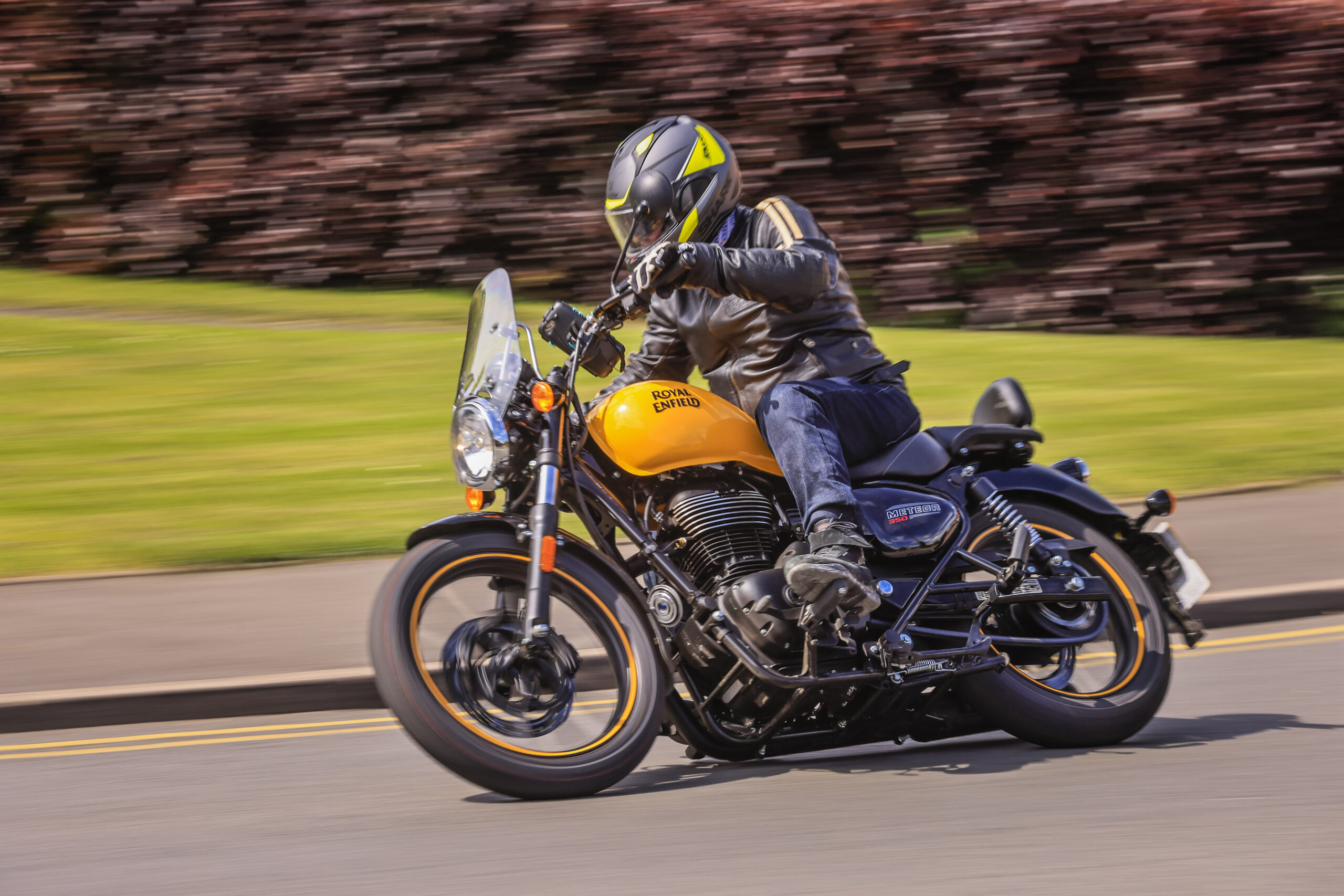
But, again, the superior chassis development skills of Enfield’s UK development team has paid dividends, and the little Meteor is a proper charmer on the road.
There are some tech highlights: there’s an LCD info screen on the single-dial instruments, and the firm provides a ‘Tripper’ sat-nav display unit. But it’s the styling and practicality where the Meteor wins out: the 15 litre tank will do more than 300 miles with the claimed 100mpg fuel consumption, the optional windscreen gives it a 50s touring feel, and while the brakes are a bit marginal in terms of power, they do come with a proper ABS setup.
Triumph Bonneville Speedmaster
To be honest, we could have picked a few of Triumph’s Bonneville roadsters for this round-up. From the entry-level 900 Street Twin to the mighty 1200 Thruxtons and the Bobber, the Hinckley firm offers a thumping parallel twin retro-classic for almost every taste.
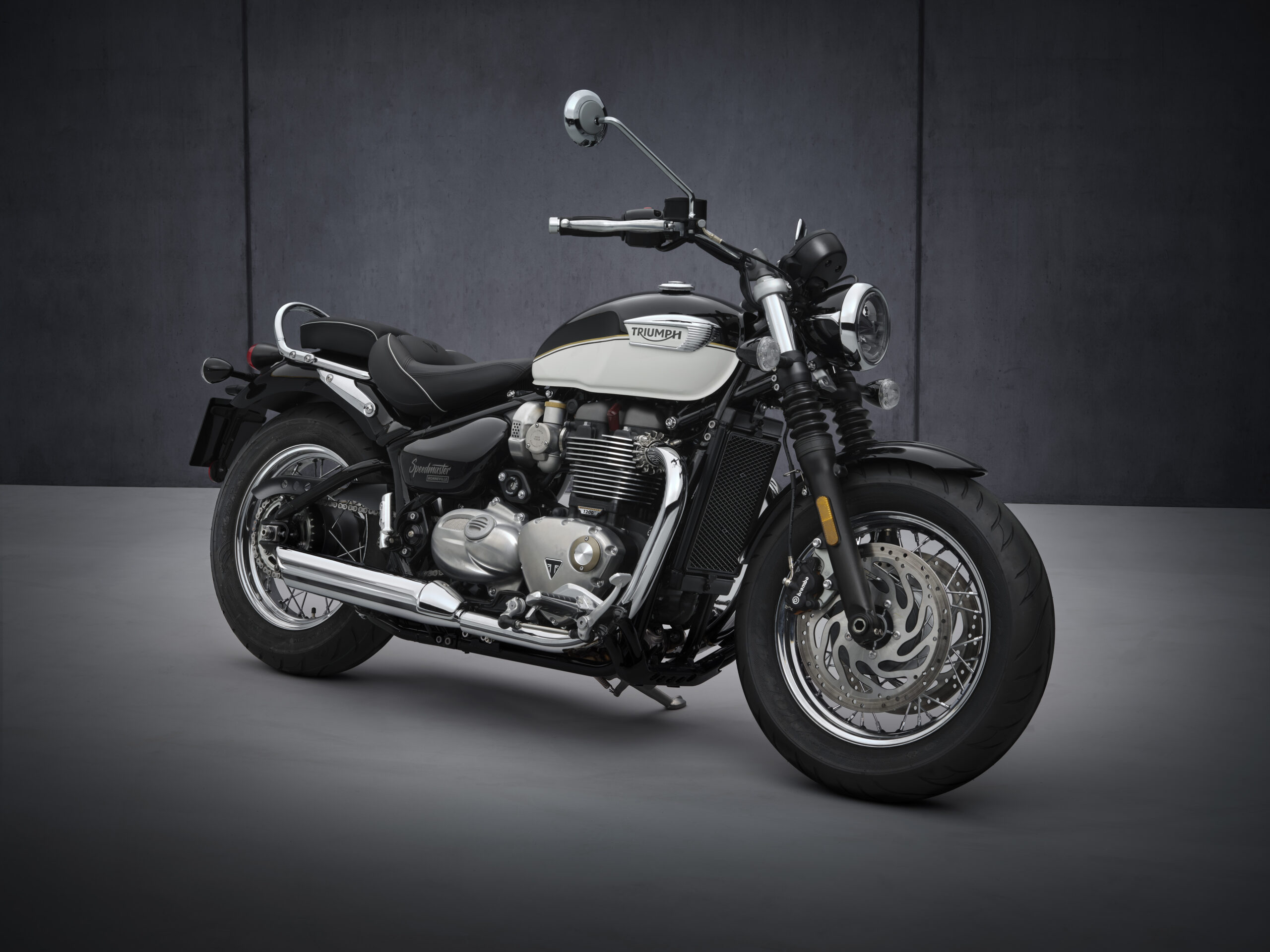
The Speedmaster is a little different though, and it isn’t one you see all the time. It’s a bit of a Yankee take on the classic British twin, with mild cruiser styling applied to the basic Bonneville recipe. You get pull-back bars, chunky 16-inch wire-spoked rims and tyres, and just enough chrome, together with subtle paint and high-end bolt-on parts.
The Speedmaster uses the high-torque 1200 twin motor, giving out 77bhp and weighs in at 263kg wet – so it’s not the sportiest of Trumpets. But the Showa forks and hidden monoshock rear suspension, together with twin Brembo disc brakes up front, let the old girl hustle once she gets up to speed.
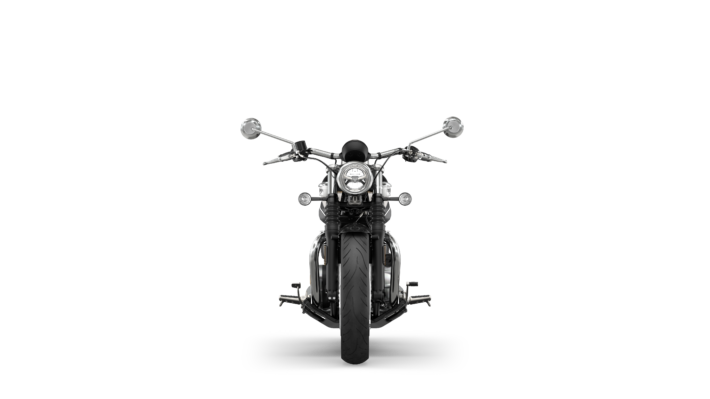
The real appeal is on a sunny cruise though, to one of the Great British seaside resorts we all love to visit. Turning up to Southend, Skegness or Scarborough on one of these feels much more appropriate than any Harley-Davidson – and you’ll look just as fabulous as you would on a big Milwaukee twin.
Yamaha XSR900
Proof, were it needed, that you don’t need to have a low-spec engine and chassis package to ride a retro roadster. Yamaha’s XSR900 uses the advanced 890cc three-cylinder engine and cast aluminium frame setup from the firm’s excellent MT-09 modern naked bike, with a bit of a re-tune and a cosmetic overhaul that harks back to the 1970s and 80s.
You don’t have to squint too hard to see elements of the legendary RD350 LC and YPVS models here, especially in the replica paint colours that Yamaha has knowingly applied…
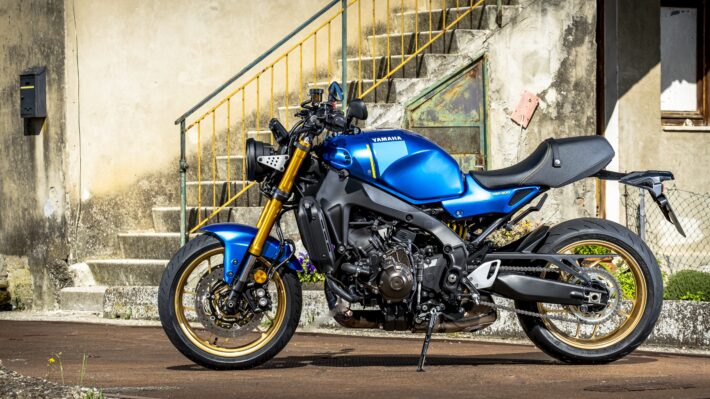
The XSR has the same power as the MT, around 117bhp, and also comes with modern rider aids, including traction control and ABS. It’s light at 193kg wet, and offers sporty modern handling that belies the 1980s styling. Early models have a little less torque thanks to a smaller 847cc motor, and suffer from less-sophisticated suspension design, but still look great.
Kawasaki Z650 RS
The original Kawasaki Z650 was launched in 1976, and it was an instant classic, with a four-cylinder air-cooled engine and sweet Japanese roadster looks. More than four decades later, the firm released an all-new Z650, this time using its water-cooled twin-cylinder motor from the Ninja/Versys/Z 650 model ranges.
Dubbed the Z650 RS, like the Z900 RS, it used the basic engine and chassis package from the modern roadster, with a heavy cosmetic retro redesign. That’s good news, because the 67bhp four-valve DOHC water-cooled motor is strong and reliable, and does good work in all its other homes.
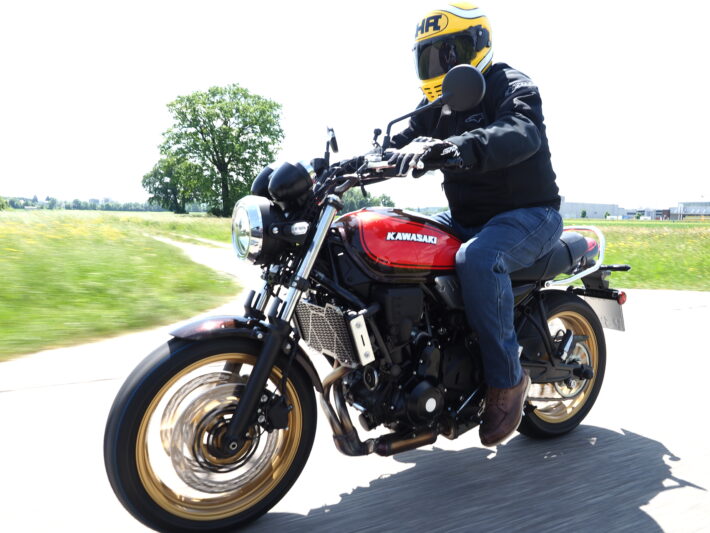
The Z650 RS has a 1970s Z650 style tank and seat unit, together with redesigned cast alloy wheels that look like wire-spoked rims. The round headlamp looks like an old-school halogen unit but of course houses a modern LED setup, and the dual clock instrument panel has useful LCD info screens incorporated within the speedo and tacho readouts.
There’s also a limited edition 50th anniversary model, with a Z1-style paint scheme, to celebrate half a century since the mighty Kawasaki Z1 was released in 1972.
Yamaha XSR700
Want the modern, sporty retro package offered by the XSR900 in a smaller package? Then the Yamaha XSR700 is just what you need. It does almost exactly the same job as the 900, but is based on the MT-07 parallel twin rather than the MT-09 triple. So you get the 1980s RD styling, with optional retro paint schemes to match, underpinned by the excellent dynamic package used on the MT-07.
The 689cc engine is lively, economical and reliable, putting out 74bhp in a torquey, pleasing manner. The steel tube frame wouldn’t quite pass for a 1980s unit, but is unobtrusive enough, while the suspension on later models is much better than the earlier designs.
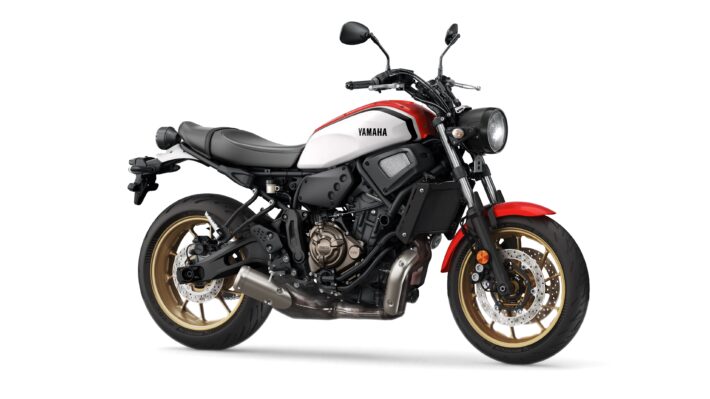
Add in a neat swingarm design with braced gull-arm design, dual four-piston brake calipers up front plus 188kg wet weight, and you have a slick, sporty little retro roadster.
There’s little in the way of rider aids, though you do get ABS and a smart LCD single-pod instrument panel. The XSR700 makes a great urban commuter and sunny weekend backroad blaster, as well as a cute customisable retro roadster. And it’s well priced too, starting around £8,000.
BMW R18 Classic
There’s more than one way to build a classic retro naked roadster – as proved by the mighty BMW R18, launched in 2020. Where the likes of Triumph bases its modern classics on its 1960s and 70s Bonnevilles, the BMW R18 takes its inspiration from the 1936 R5 – one of the Bavarian firm’s most iconic historical machines.
Like all BMWs from 1923 to 1983, the R18 uses the familiar Boxer motor, with an air-cooled, two-valve, pushrod OHV architecture, together with shaft final drive. It’s styled like the R5 too, with shrouded forks, black pinstriped tank, and a hidden monoshock rear end which looks like a hard tail machine.
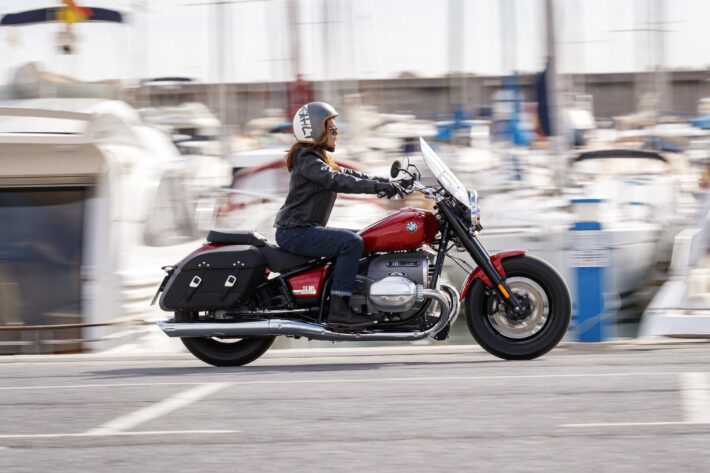
Under the pre-war styling though, the R18 is packed with technology. The huge 1,802cc motor is air-cooled, but uses full engine management with ride-by-wire fuel injection plus twin spark plugs and four valves per cylinder. It puts out ‘just’ 91bhp, but has 158Nm of torque, transmitted through a dry clutch and six-speed gearbox to that shaft drive. There are riding power modes, traction control, cruise control and ABS, and you also get a reverse gear, which uses the starter motor to slowly back the heavy 345kg beastie out of tight spots.
The R18 is a brilliant ride, with more road presence than a Peterbilt truck. The weight is always there, lurking in the background, but BMW has worked hard to make it all manageable, and it does work. In a straight line, there’s enormous grunt in all gears, and it’s quicker than you’d think up to about 90mph. Cornering takes some commitment, but it’s a breeze once you adjust, and there are no nasty wobbles, weaves or wallows mid-bend.
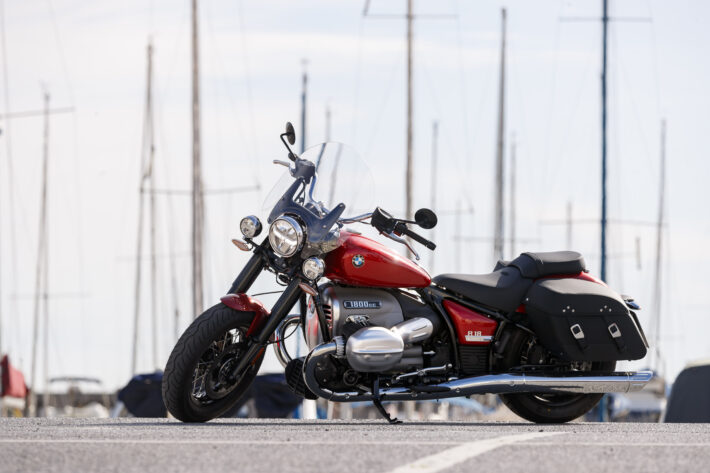
The big issue for many, though, will be the price: the Classic costs almost £20k, which is a lot of cash for a very focussed retro roadster.
Kawasaki Z900 RS
Kawasaki got this bike pretty much spot-on from the start. It’s a modern take on the legendary Z1, launched in 1972, which is arguably the first full-on litre class superbike. Released in 2017, this RS model took the modern Z900 super naked, and restyled it with 70s-style bodywork, and running gear tweaked to look like the original.
That meant fake air-cooling fins on the water-cooled engine, cast wheels with thin spokes to resemble wire spoked rims, round headlamp, a swoopy fuel tank and ‘duck tail’ rear seat unit. The monoshock suspension setup from the Z900 spoils the styling plan a little – but it’s a testament to the overall design that it doesn’t really jar too much.
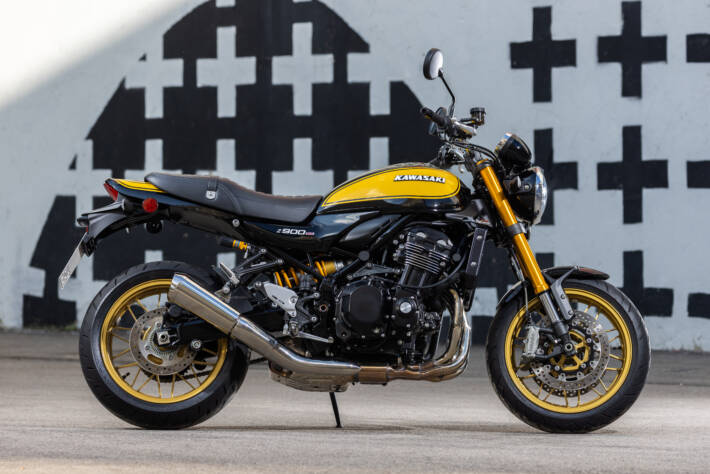
Kawasaki took the opportunity to revamp the power output from the 948cc DOHC 16v four-cylinder engine too, cutting some of the revvy top end peak power in favour of more low-down and midrange grunt. The riding position and frame geometry are altered too, for a more relaxed ride, while the adjustable suspension is softer and more plush. The brakes are still fairly high-end: dual four-piston calipers up front, with ABS, and you also get traction control and LED lighting.
For 2022, Kawasaki released two special editions of the RS: a 50th anniversary bike with unique ‘Fireball’ paint, and an SE variant, with Öhlins shock and high-end Brembo brakes.
Best of all, there’s an even saucier-looking version available: the Z900 RS Café. This has a small nosecone round the headlamp, styled like the Z-1R muscle bike of the 1970s. The little screen adds a dash of wind protection – but its main function is really styling, and it looks fantastic, especially in the lime green paint scheme.
Suzuki Katana
The original Suzuki Katana, named after a samurai sword, was a special version of the GSX1000, launched in 1981, and conceived by legendary German ex-BMW designer Hans Muth. Its angular full fairing, sharp graphics and sleek lines made it an instant classic of the genre, and while it was actually fairly short-lived, it’s had a big impact on bike design.
Fast forward to 2019, and Suzuki was keen to cash in on the retro roadster craze being ridden by the other firms. A cosmetic makeover of the GSX-S1000 super naked produced the 2019 Katana 1000, which had much of the performance of the GSX-S, with looks borrowed straight from the original.
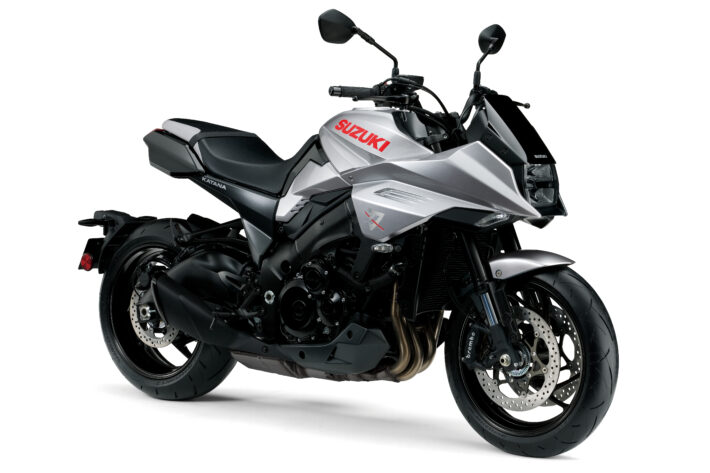
The new Katana worked well enough: the GSX-S engine was based on the GSX-R1000 K5 design, which is one of the all-time great motors. The chassis is also solid enough stuff, copying the stable, capable performance of the donor machine. The weight had crept up a little to 215kg, thanks to the extra bodywork, and there was one major flaw in the design – the fuel tank capacity had dropped to just 12 litres from 17 litres on the GSX-S1000.
The 152bhp power output made the new Katana a capable performer, and the styling works well, though it does look a little chunky compared with the sharp, angular style of the original Katana. If it had a proper fuel capacity, it would make an excellent stylish everyday roadster – at a good price. As it is, you’re always looking for a fuel stop – push hard and you’ll have the fuel light on in less than 80 miles – and it’s, sadly, an annoyance with no easy solution, short of strapping a jerry can to the pillion seat…

4 comments on “Top Ten Modern Retro Roadsters”
I actually had a Z650! In the good old days and thought I had made it !!
Went over to the TT twice on it and found that I really rode slower than most!?!?
Still loved that bike !! I actually saw a restored Z650 in Biarittz! It was tiny compared to most bikes currently on the road now!?
I’m sticking to my Africa Twin!!
Saw the new BSA today . So dissapointed and won’t be buying one . Just really poor quality . No chrome on engine just painted . Looks wrong
On a good note , I was lucky to be one of 300 to get hold of the Z900 Rs se . Absolutely amazing . Power, stopping and handling are awesome . Love it . Quaulity of build spot on . I would change Anything .
The Z900 is the one I would put my money on. It is so faithful to the original,absolutely beautiful.
No Kawasaki W800? Really??